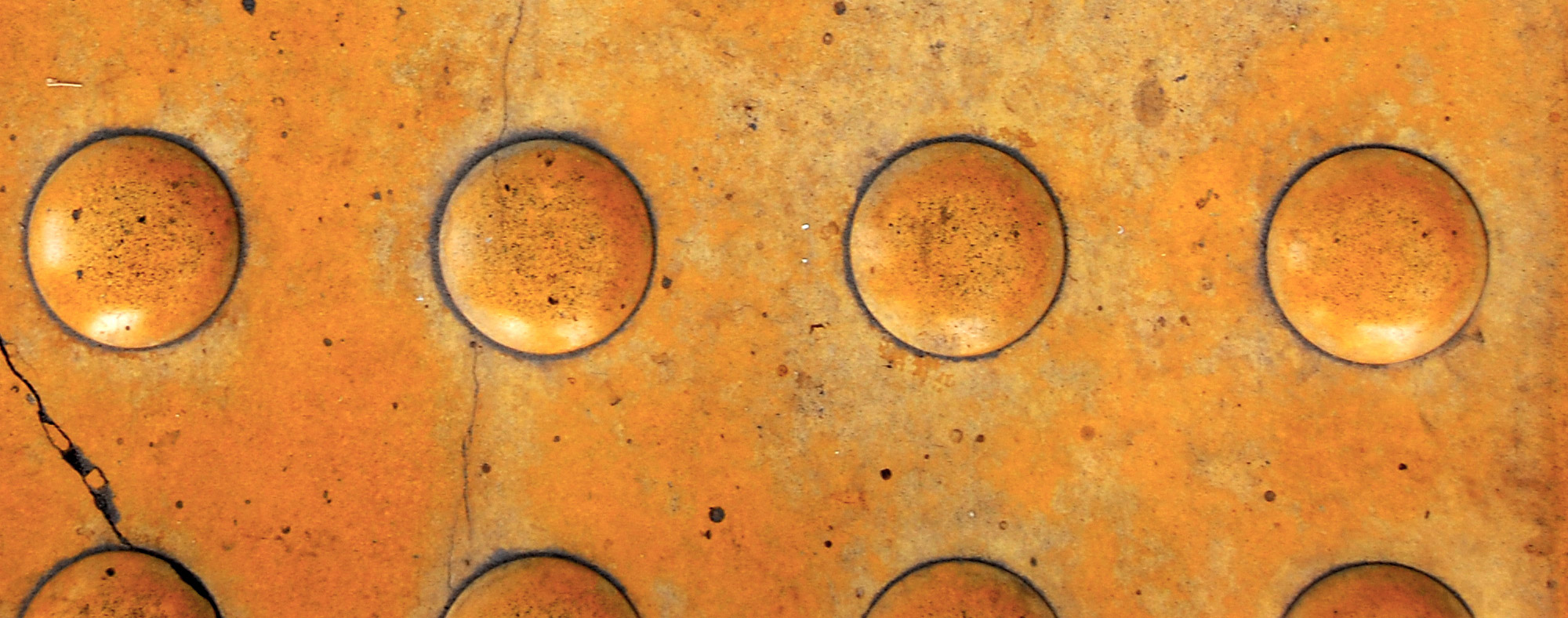
Why is a Minimum Compression Strength of 12K psi Strongly Recommended for Truncated Domes?
Truncated domes or detectable warning tiles are designed to withstand sustained pedestrian traffic, and in order for them to remain reliable over the span of many years, a minimum compression strength of 12K psi is recommended. From severe weather conditions to heavy commuter traffic, detectable warning dome tiles must be ready to withstand the ambient conditions that will consistently test the integrity of the structure.
The quality of truncated dome tiles is often determined based upon “compressive strength.” This key indicator of durability measures the capacity of a material to sustain structural integrity without fracture. Every material responds to its compressive strength limit differently, whether it deforms irreversibly or breaks.
For the safety of all who traverse truncated dome tiles and for ADA compliance, it is essential that these detectable warning tiles have a minimum compression strength of 12K psi. This level of compression strength allows the tiles to be extremely durable and slip resistant with a low water absorption.
Truncated dome tiles face a number of daily tensions from harsh weather to repeated foot traffic from daily commutes. Weather offers a number of variables with temperatures changing from extreme heat to heavy rain to freezing conditions. When too much water enters the dome tile it can cause expansion of the material or even an eventual collapse — so the more waterproof the material the better.
Meanwhile, detectable warning dome tiles must be able to withstand heavy traffic, whether from heavy pedestrian traffic, drive-overs, or vibrations from big vehicles.
On top of all these factors, maintaining functionality in truncated dome tiles also comes down to choosing the right material and correct installation. While the government has certain standards in place for the Certificate of Occupancy Compliance, this certificate only meets minimum requirements, many of which could lead to early product failure. The true goal is to have lasting compliance, and this is dependent on the quality of product chosen.
The types of materials used for truncated domes include plastic, concrete, metal, and other types. Each material needs its own type of installation.
Nano-Engineered Polymer Concrete
To achieve the strongest possible element for detectable warning dome tiles, a nano-engineered polymer concrete surpasses normal materials such as concrete or plastic because it combines physical, chemical, and mechanical properties to create long lasting durability and functionality.
This nano-engineered polymer concrete has a water absorption rate of less than 0.09% and a compression strength of greater than 16,800 psi. These two key factors help the truncated dome tiles to resist deterioration for years.
Nano-engineered polymer concrete is vastly superior to brick or concrete because both materials erode easily due to water absorption. Meanwhile, nano-engineered polymer concrete is nearly impervious to weather. Little to no water absorption close to zero means that detectable warning dome tiles made from this material will have extended life.
One in every 13 Americans is blind or has some visual impairment. Data also shows that nearly every 7 minutes another American is beginning to experience eyesight deterioration. The safety of blind or visually impaired individuals pedestrians often falls on detectable dome tiles, meaning more resilient materials and installation methods are a crucial part of pedestrian safety over time.
For StrongGo, the proven detectable warning system is not only fully ADA compliant, but it also features extreme durability, high slip resistance, extremely low water absorption, monolithic installation, and an aesthetic appeal.


